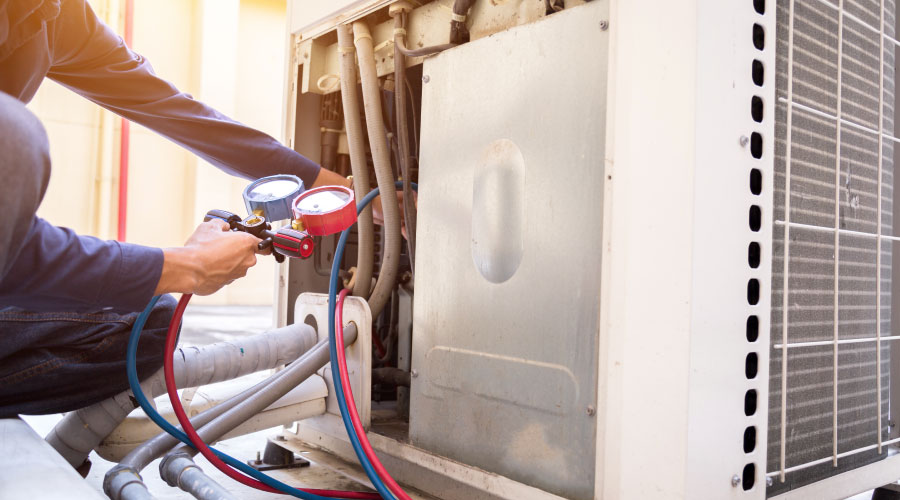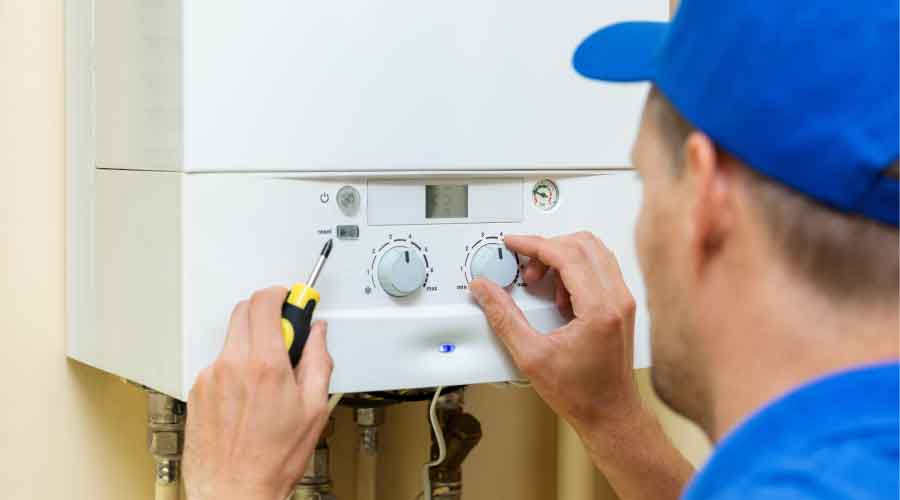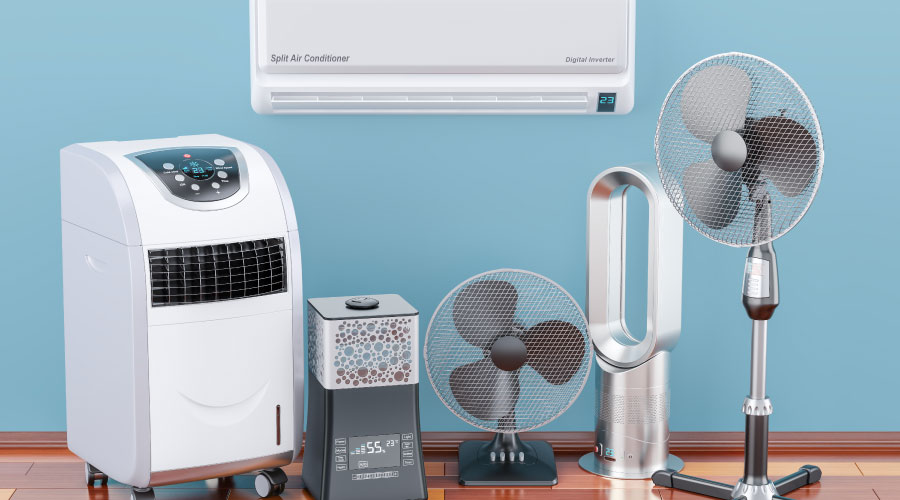HVAC Focus: On-Demand Cooling
Savvy planning can ensure that temporary systems deliver more than just cooled air in emergencies
The use of on-demand cooling systems is growing rapidly. Maintenance and engineering managers increasingly specify these systems to provide temporary cooling to areas when a building's central air-conditioning system is down for maintenance or due to failure.
On-demand cooling systems have become an efficient, effective means of providing temporary air conditioning to offices, computer rooms, telecommunication-equipment rooms, and areas in which the loss of cooling would disrupt operations. The systems help prevent equipment losses, system downtime, and the need to close facilities.
Managers also have found that on-demand cooling systems can provide cooled air for special events in areas lacking air-conditioning systems. They can provide temporary spot cooling to supplement central systems, and they can support maintenance operations in confined spaces, such as inside large boilers during inspections.
System Types
Two types of on-demand cooling systems are available: air-to-air and water-based systems. The type of system that best suits a particular application depends on the application’s requirements.
Air-to-air systems offer cooling capacities of up to 5 tons. Managers also can specify smaller systems, typically wheel mounted and with a capacity of 1 ton or less, that can be moved into a space requiring cooling. Flexible ductwork connected to a window transfers the heat generated by these units out of the building, and a standard 110-volt outlet powers most units.
Units with capacities greater than 1 ton typically are mounted outside of the building, and cooled air is ducted through a window or other opening to the space. Most of these units operate on 208-230 volt circuits that are installed for temporary use.
Water-based systems are available in capacities of up to 250 tons. Most units with capacities of up to 5 tons are placed within the space to be cooled, and a once-through, water-cooling system removes heat generated by the unit's condenser. A standard garden hose connected to the unit delivers water, and a second hose carries the water to the nearest floor drain for discharge.
Units with capacities greater than 5 tons typically are mounted on a trailer located outside the building, and the building’s chilled-water system pipes chilled water to and from the unit. Power for the unit comes from a temporary hookup to the building’s electrical system or from a generator mounted on the trailer with the on-demand cooling system.
Making a Choice
When selecting on-demand cooling units, managers must ensure that the unit is properly sized for the cooling load. If the unit is too small, it will not properly cool the space. If the unit is too large, it will not properly dehumidify the space. Oversized units also will cycle frequently, reducing system efficiency and increasing energy costs.
Managers also must carefully consider installation requirements. Small air-to-air portable units must have a way to vent their heat, either to the building exterior or to an unoccupied space. Small water-based systems must have a source of water and a nearby drain.
Larger units connected to a building’s HVAC systems require piping connections for the chilled-water supply and return, and unless the unit is self-powered, technicians also will need to provide a temporary connection to the building’s electrical system.
Rent or Buy?
Perhaps the most subjective part of the decision related to on-demand cooling involves whether to buy or rent. Managers either can buy units and store them on-site or rent units as needed.
Managers should base the purchase/rent decision on the facility’s needs for on-demand cooling. The process starts by identifying critical facility areas that will require temporary cooling, should central air conditioning become unavailable. Typical areas in this scenario include those where a loss of air conditioning would require shutting down equipment to prevent damage from overheating, as well as those where activities would have to be curtailed should air conditioning be lost.
The review process should include areas with ongoing research projects. Some projects are extremely sensitive to changes in temperature, so the loss of air-conditioning for even one day could damage years of valuable research.
And in health care facilities, managers can identify areas where the loss of cooling would interfere with patient care or would require the organization to curtail services.
For each of these critical areas, managers need to identify the system now supplying air conditioning, evaluate the reliability of that system based on its age and operating history, and identify any existing system that could provide backup cooling.
Also among the candidates for on-demand are critical areas where the reliability of the existing system is questionable, and where no existing backup system could provide air-conditioning. For each such area, managers need to determine the cooling load that the on-demand system must meet.
Finally, managers also should consider other ways they can apply on-demand cooling systems in a facility, including supporting maintenance activities or providing supplemental cooling on an as-needed basis. To do so, they will need to determine cooling loads for each of these applications.
The Final Step
Once managers have determined the potential uses for on-demand cooling systems and calculated the unit sizes, the final step is to consider how often they expect to need the systems.
Some units can move between different loads, as long as different primary air-conditioning systems serve those areas. The simultaneous failure of both primary systems is rather low.
For units that would be used fairly often, it is more cost-effective to buy than to rent. In contrast, for areas with an infrequent need for on-demand cooling, renting might be a better option.
Finally, the availability and required setup and delivery time for rental units will influence that decision. If managers opt for renting, they will need to establish contracts with rental companies ahead of time that specify how quickly a unit must be delivered and placed into operation. When a building air-conditioning system already has failed, it is too late to go looking for an on-demand unit.
James Piper, P.E., is a national consultant based in Bowie, Md., with more than 25 years of experience with facilities maintenance and engineering issues.
HVAC Efficiency: Water Heaters
In the search for ways to reduce energy use in HVAC systems, maintenance and engineering managers too often overlook water heaters or consider them a low priority. But depending on the demand for hot water in a building, these units can be a significant contributor to total building energy use, particularly if the units have been neglected.
Most water heaters in commercial and institutional buildings have an operating efficiency of 78-85 percent. Newer, high-efficiency condensing units offer efficiencies of 88-90 percent, and ultra high-efficiency units operate at about 95 percent efficiency.
These ratings are high, particularly in comparison to other building mechanical systems, but they do not take into consideration system losses or losses due to poor maintenance. These two factors can reduce overall operating efficiency to about 50 percent.
Corrosion and dirt accumulation on heat-transfer surfaces within the water heater can reduce operating efficiencies. Burners that are not properly adjusted can dramatically reduce operating efficiencies, and controls that are not properly set up can cause frequent cycling of the burners, further reducing efficiency.
While the efficiency of the water heater itself is important, managers also must look at other components in the system if they are to ensure it operates at peak efficiency. For example, damaged or missing pipe insulation will drive up energy losses.
In addition to maintenance issues, managers can upgrade and change the existing systems to improve operating efficiency. For central systems, managers might consider installing a condensing boiler, which offers operating efficiencies of at least 90 percent.
If a sidearm heater attached to a heating system boiler is generating hot water — particularly if heating water is not required year round — managers might consider replacing the system with a dedicated water heater. Operating a heating boiler solely to generate domestic hot water is not very efficient and increases wear on the heating boiler, due to frequent cycling.
Managers also might look into replacing the on/off burner and control system with a modulating system. Modulating controls eliminate the inefficiencies associated with cycling and improve annual operating efficiencies.
In large facilities served by a single boiler, efficiency might improve by replacing the unit with several smaller, modular boilers. Smaller boilers operating at or near full capacity are more efficient than one large boiler that must cycle. Multiple boilers also provide backup in case of one unit’s failure.
Finally, if one or more areas require hot water but are located a significant distance from water heaters, managers might consider installing a tankless water heater at each of these locations. These heaters eliminate losses in the system associated with piping water from the central water heater to the point of use. And tankless heaters also will reduce water use because it is common to have water run for a period of time at these locations to get hot water.
— James Piper, P.E.
|
Related Topics:











